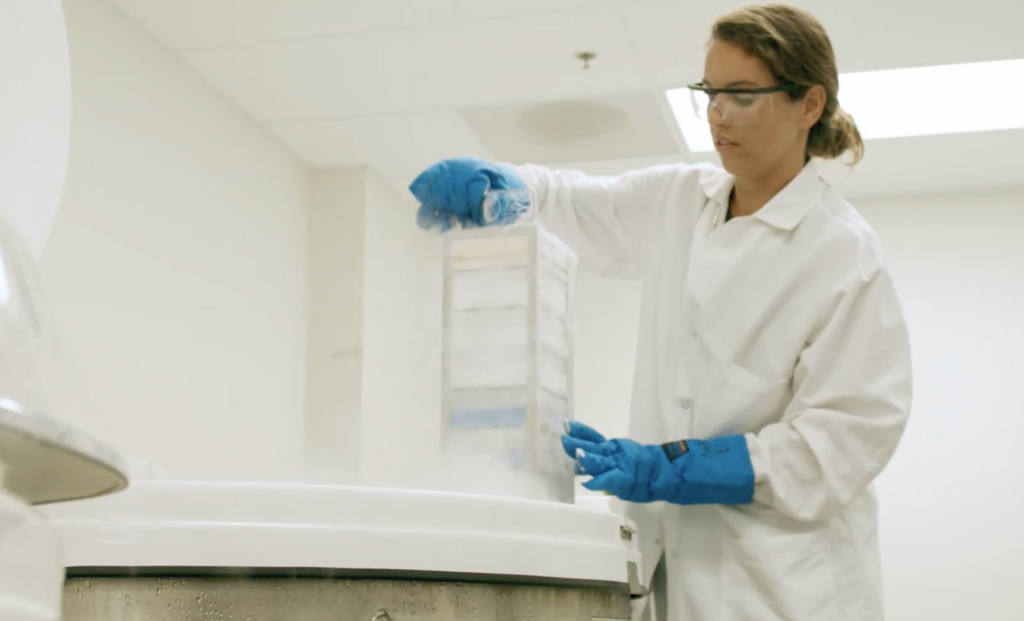
LA JOLLA, CA—Scientists at La Jolla Institute for Immunology (LJI) have found a potential new target for treating Parkinson’s disease. Their new research reveals how a protein in brain cells may drive Parkinson’s onset—and offers a possible explanation for why Parkinson’s is much more common in men.
In recent years, LJI scientists have found increasing evidence that autoimmunity plays a role in the onset of Parkinson’s disease. Their recent study in The Journal of Clinical Investigation shows that PINK1 appears to mark some brain cells for immune cell attack.
“This research allows us to better understand the role of the immune system in Parkinson’s disease,” says LJI Professor Alessandro Sette, Dr.Biol.Sci., senior author of the recent study.
PINK1 means no harm. The protein actually helps brain cells regulate their mitochondria—the cellular structures that provide energy for a cell. The researchers found that some people with Parkinson’s disease have T cells that mistakenly see PINK1 as a red flag. These T cells may target brain cells that express PINK1, contributing to inflammation and brain cell death.
The new research may help explain why Parkinson’s disease is around twice as common in men versus women. The LJI team found that men with Parkinson’s disease had a 6-fold increase in PINK1-specific T cells, compared with healthy male study participants. Women with Parkinson’s disease showed only a 0.7-fold increase in PINK1-specific T cells, compared with healthy female study participants.
“The sex-based differences in T cell responses were very, very striking,” says Sette. “This immune response may be a component of why we see a sex difference in Parkinson’s disease.”

These PINK1-targeting T cells may also prove valuable as a biomarker of Parkinson’s disease, allowing for earlier diagnosis in patients at-risk of developing the neurodegenerative disease, says Cecilia Lindstam Arlehamn, P.h.D., who co-led the research at LJI. Studying T cell responses to PINK1 may also guide the development of new Parkinson’s disease therapeutics.
“We could potentially develop therapies to block these T cells, now that we know why the cells are targeting in the brain,” says Lindstam Arlehamn.
PINK1 is not the only important T cell target, or “antigen,” in patients with Parkinson’s disease. Previous research led by Sette and Lindestam Arlehamn showed that many Parkinson’s disease patients have T cells that target a protein called alpha-synuclein. This T cell response was linked to inflammation in the brain and the onset of Parkinson’s disease.
But not all Parkinson’s patients show this T cell response to alpha-synuclein, so LJI researchers expanded their hunt for additional antigens that might trigger harmful autoreactive T cell responses in people with Parkinson’s disease.
The new research suggests PINK1 is one such antigen, but the researchers aren’t stopping there. Sette says scientists are just starting to get a full picture of how Parkinson’s begins.
“We need to expand to perform more global analysis of the disease progression and sex differences—considering all the different antigens, disease severities, and time since disease onset,” says Sette.
Additional authors of the study, “PINK1 is a target of T cell responses in Parkinson’s disease,” are Gregory P. Williams (first author), Antoine Freuchet, Tanner Michaelis, April Frazier, Ngan K. Tran, João Rodrigues Lima-Junior, Elizabeth J. Phillips, Simon A. Mallal, Irene Litvan, Jennifer G. Goldman, Roy N. Alcalay, John Sidney, and David Sulzer.
This work was supported by Aligning Science Across Parkinson’s (ASAP-000375), the Michael J. Fox Foundation for Parkinson’s Research (MJFF), the National Institutes of Health (NIH T32AI125179), the NIH’s National Institute of Neurological Disorders and Stroke (R01NS095435), the JPB Foundation, and the Women’s Health Access Matters (WHAM) Investigator’s Fund.
DOI: 10.1172/JCI180478



